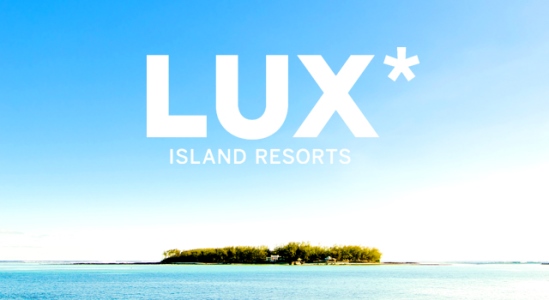The History of Mauritius
It is thought that Mauritius was first discovered by the Arabs in 975 AD, but is not really proven. The first documented discovery is by the Portuguese between 1507and 1513. The island was visited by the Dutch In 1598 when they landed in a bay in the south-east. The Dutch admiral, VanWarwyck was in command of the fleet and he named the bay after himself (Warwyck haven).The bay is now known as Grand Port. He named the island "Mauritius" after Prince Mauritius Van Nassau, the stadtholder of Holland.
Although the Dutch called occasionally for shelter, food and fresh water, they made no attempt to develop the island.
Danish adventurers arrived in 1622, wanting to exploit the ebony with which the island abounded. The French and British sent out expeditions in 1638, but their ships arrived too late. In May 1638, Cornelius Simonsz Gooyer had set up the first permanent Dutch settlement in Mauritius. He was sent by the Netherlands East India Company and became the first governor. At that stage there was a population of 25 colonists who planned to exploit the island's resources of fine ebony and ambergris, rearing cattle and growing tobacco.
A hundred slaves were imported from Madagascar and convicts sent over from Batavia (Java). The convicts were employed in cutting ebony. The free colonists came from Baltic and North Sea Ports. In 1710 the last settlers abandoned Mauritius leaving a batch of runaway slaves bent on vengeance for their ill treatment.
In September 1715, Guillaume Dufresne d'Arsel took possession of Mauritius in the name of King Louis XV of France. He named it the Ile de France, placed the French flag near what is now Port Louis, drew a document witnessed by his officers declaring the island French and sailed away after three days.
During the seven years war (1756-1763) France and England continued to battle over control of the Indian Ocean and the French East India company enlisted privateers. When the French lost the wars in India, they blamed the company and accused its officials of corruption. This resulted in the official handling over of Mauritius to the French King. In 1767, the Royal Government was established on the island. At that time, there was a population of 18,773 which included 3,163 Europeans and 587 free blacks, mostly Hindus. The rest were slaves.
In 1785 the Ile de France was declared the seat of government of all French possessions east of the Cape. A French nobleman, Vicomte de Souillac was made governor (1779-1787) bringing an era of extravagance to the colony.
On the last Sunday in January 1790, a packet-boat arrived in the Port Louis harbour from France, flying a new flag, the Tricolour. It brought news of the revolution in France.
The last French governor of Ile de France was appointed by Napoleon Bonaparte in 1803 to bring the colony back to order after 13 years of autonomy.
On 3 December 1810, the British, under General Abercrombie, marched into Port Napoleon where the French surrendered. Ile de France, Port Napoleon and Port Imperial was reverted to their former names, Mauritius, Port Louis and Mahebourg. Settlers who did not want to stay under a British administrator were permitted to return to France with all their possessions.
In 1810, Robert Farquhar, aged 34 became the first English governor. He announced that civil and judicial administration would be unchanged. The British also preserved the island's laws, customs, language, religion and property. The treaty of Paris did restore Bourbon/Reunion island in 1814 but the Ile de France, by now with its former name of Mauritius, was confirmed as a British possession.
Slavery was finally abolished in 1835 but not before the owners received £2,000,000 compensation from the British.
Shortly afterwards thousands of Indians from Madras, Calcutta and Bombay were encouraged to emigrate to Mauritius with promises of a labour contract that included a salary and accommodation and a passage home. They arrived in dreadful conditions at Port Louis where they were housed in temporary depots and distributed to the sugar estates.
In 1936, the Labour Party was formed and persuaded the Indians to take politician action and campaign for better working conditions.
The Second World War brought infrastructural development. The British based their fleet at Port Louis and Grand Port, as well as building an airport at Plaisance and a sea plane base at Baie du Tombeau. A large telecommunication station was built at Vacoas, although the first underwater telephone cable, linking South Africa to Australia, had been laid to Mauritius in 1901.
In the election held after the war, the Mauritius Labour Party won the majority of seats in the Legislative Council set up under the 1948 constitution. this success was repeated in 1953. After the 1959 election (the first held following the introduction of universal adult franchise), Hindu doctor (later Sir) Seewoosagur Ramgoolam, leader of the Mauritius labour Party became Chief Minister, then Premier in 1965, holding the post until 1982.
Mauritius became an independent country within the Commonwealth of Nations in 1968, Queen Elizabeth II as Head of State represented by a Governor General.
In 1992, Mauritius became an independent republic with the Commonwealth.
Since independence, Mauritius has changed drastically from a sugar producing island to a newly industrialised nation. Much of its success is attributable to a policy of diversification from its traditional one crop industry, sugar to tourism, textile and agriculture. Mauritius has now the distinction of being one of the most stable countries in the developing world.






















